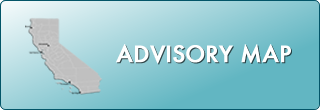Updated Statewide Advisory for Fish that Migrate Offers Safe-Eating Advice for Five Species
For Immediate Release
Contact: Amy Gilson
(916) 764-0955
Amy.Gilson@oehha.ca.gov
SACRAMENTO – An updated statewide advisory issued today for fish that migrate in California rivers, estuaries, and coastal waters provides safe-eating advice for American Shad, Chinook (King) Salmon, Steelhead Trout, Striped Bass and White Sturgeon.
The updated advisory covers these species when caught in anadromous waters (waters with access to the ocean). Separate advice applies to these species when found in lakes and reservoirs. The California Environmental Protection Agency’s Office of Environmental Health Hazard Assessment (OEHHA) developed the recommendations based on the levels of mercury and polychlorinated biphenyls (PCBs) found in fish caught from these waters.
“Many fish have nutrients that may reduce the risk of heart disease and are excellent sources of protein,” said OEHHA Director Dr. Lauren Zeise. “By following our guidelines for these species when caught in anadromous waters, people can safely eat fish low in chemical contaminants and enjoy the well-known health benefits of fish consumption.”
The following advice is issued for consuming American Shad, Chinook (King) Salmon, Steelhead Trout, Striped Bass and White Sturgeon from anadromous waters:
- Women ages 18 – 49 and children ages 1 – 17 should not eat Striped Bass or White Sturgeon. They may safely eat a maximum of two total servings per week of American Shad, Chinook (King) Salmon, or Steelhead Trout.
- Women ages 50 and older and men ages 18 and older may safely eat a maximum of seven total servings per week of American Shad; or five total servings per week of Chinook (King) Salmon or Steelhead Trout; or one total serving per week of Striped Bass or White Sturgeon.
One serving is an eight-ounce fish fillet, measured prior to cooking, which is roughly the size and thickness of your hand. Children should eat smaller servings. For small fish species, several individual fish may make up a single serving.
A poster with the updated safe-eating advice for fish that migrate is available on OEHHA’s website in both English and additional languages. The updated advice has also been incorporated into the posters for seven anadromous waters with site-specific advisories: Lower American River, Lower Consumnes River, Lower Feather River, Lower Mokelumne River, Mokelumne River at Lodi Lake, Sacramento River/North Delta, and San Joaquin River. For any fish species in anadromous waters that are not covered by these advisories, OEHHA recommends consulting the statewide advisory for eating fish from California rivers, streams, and creeks without site-specific advice.
Mercury is released into the environment from mining and burning coal. It accumulates in fish in the form of methylmercury, which can damage the brain and nervous system, especially in developing children and fetuses. Because of this, OEHHA provides a separate set of recommendations specifically for children up to age 17 and women of childbearing age (18 – 49 years).
PCBs are a group of industrial chemicals. At high levels of exposure, they can cause health problems, including cancer. Although they were banned in the United States in the late 1970s, PCBs persist in the environment from spills, leaks or improper disposal. PCBs accumulate in the skin, fat, and some internal organs of fish. To reduce exposure from PCB-contaminated fish, OEHHA recommends eating only the skinless fillet (meat) portion of the fish.
OEHHA’s fish advisory recommendations are based on the levels of contaminants, such as mercury and PCBs, that persist in the environment and accumulate in fish. They are independent of any advisories to limit fish intake due to freshwater or estuarine harmful algal blooms (HABs). Before fishing, check the California HABs Portal to see if there are recommended HAB advisories and always practice healthy water habits.
Eating fish in amounts slightly greater than the advisory’s recommendations is not likely to cause health problems if it is done occasionally, such as eating fish caught during an annual vacation.
In addition to statewide advisories, OEHHA continually develops fish advisories for specific water bodies across the state. OEHHA currently offers more than 130 site-specific advisories for lakes, reservoirs, rivers, bays and coastal areas across California. Advisories are available on OEHHA’s Fish Advisories webpage.
OEHHA’s mission is to protect and enhance the health of Californians and the environment through scientific evaluations that inform, support, and guide regulatory and other actions in the state.
###
Related Notices
Fish, Incident Response, Seafood Safety, and Harmful Algal Bloom Section
Sacramento Office
1001 I Street
Sacramento, CA 95814
Phone: (916) 324-7572
Fish@oehha.ca.gov

